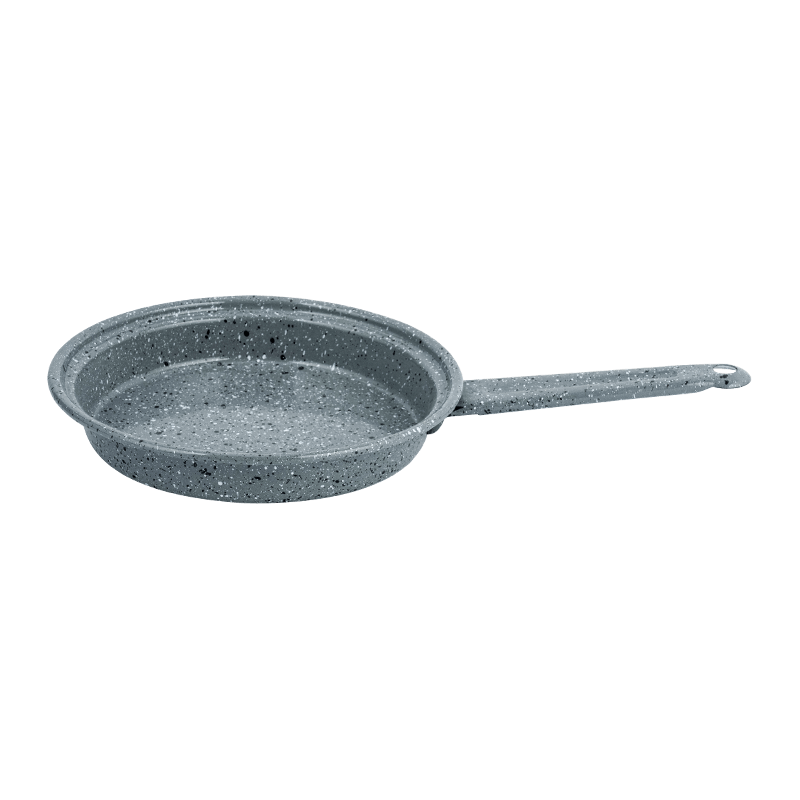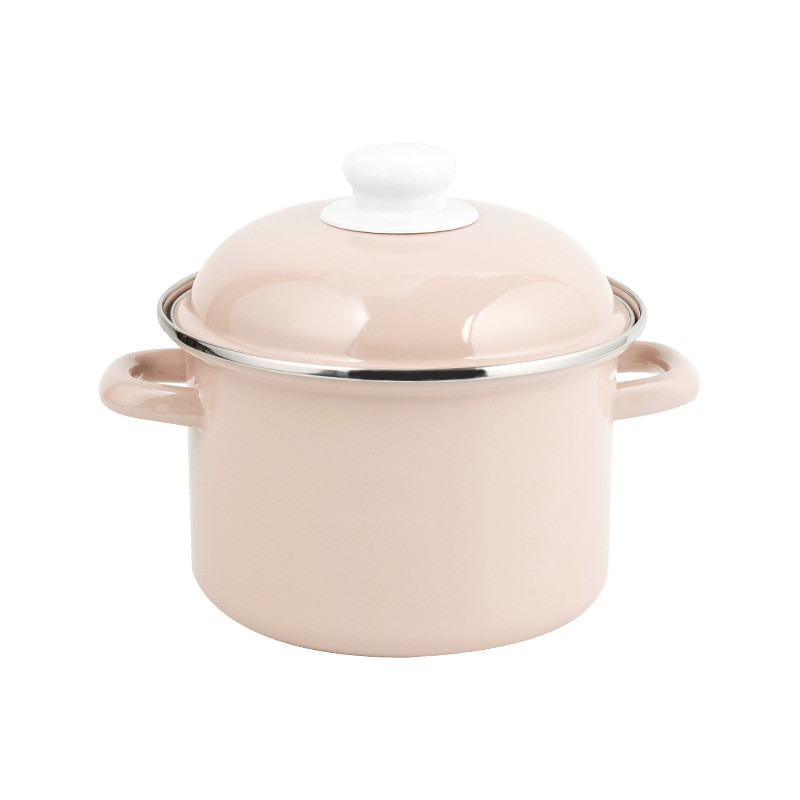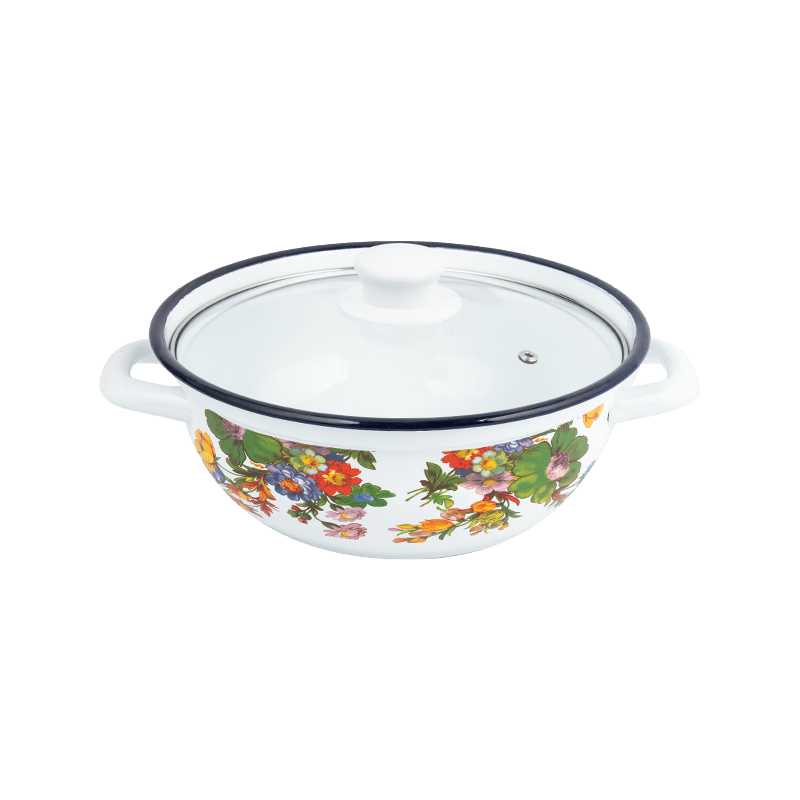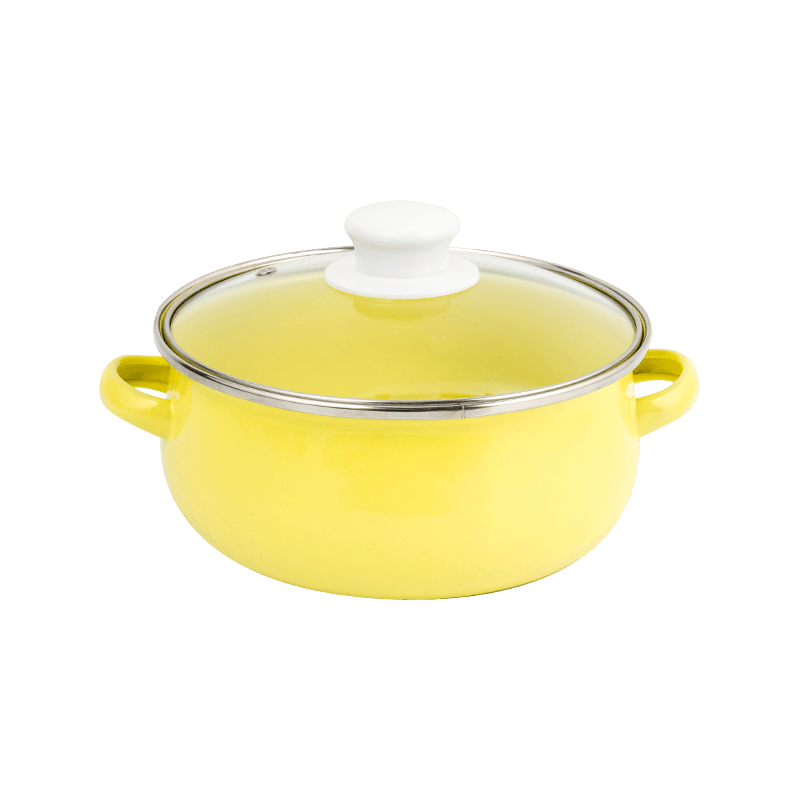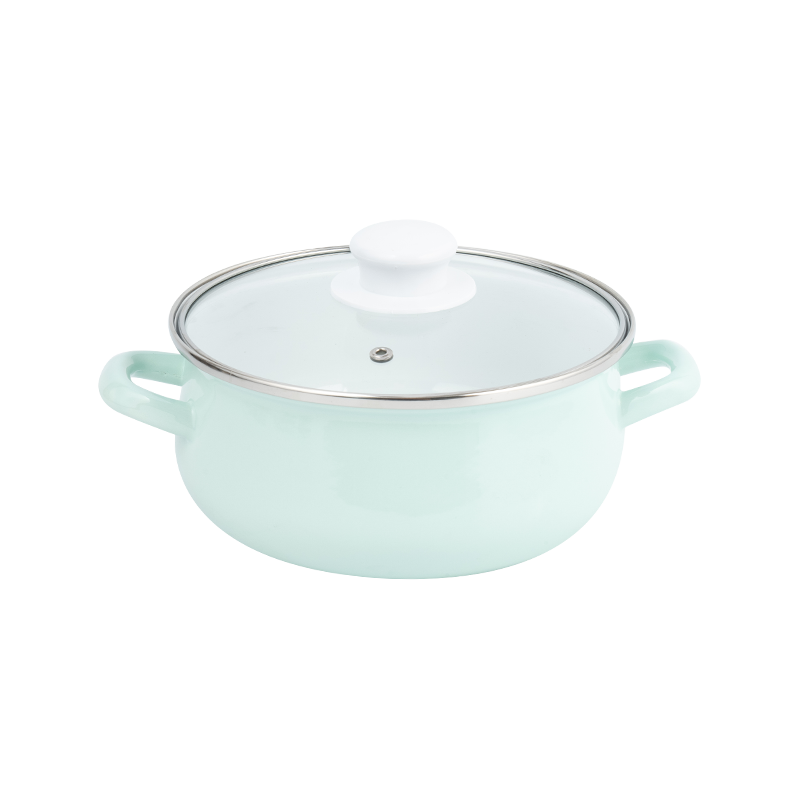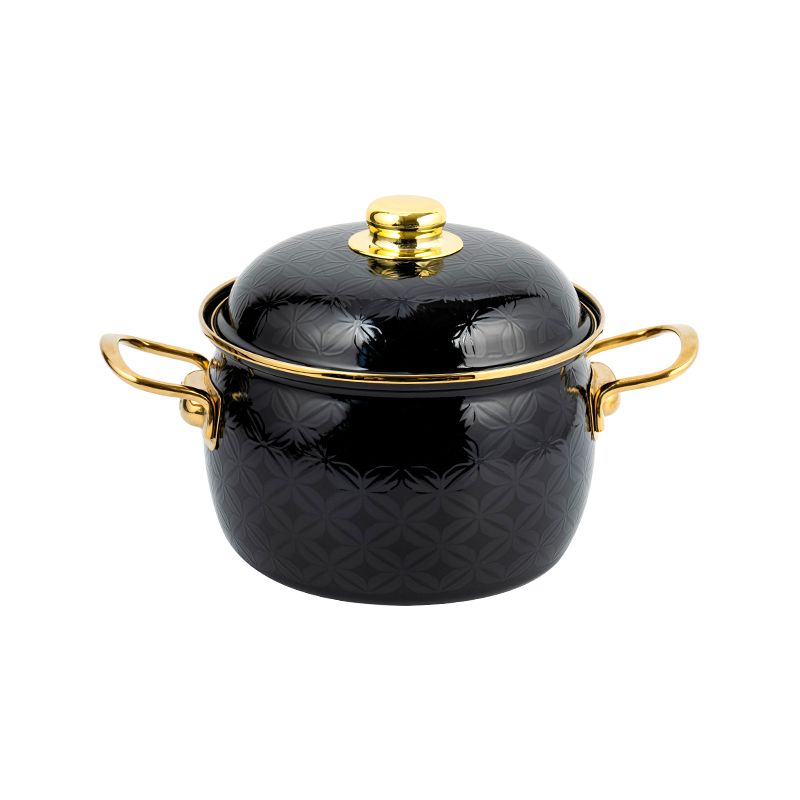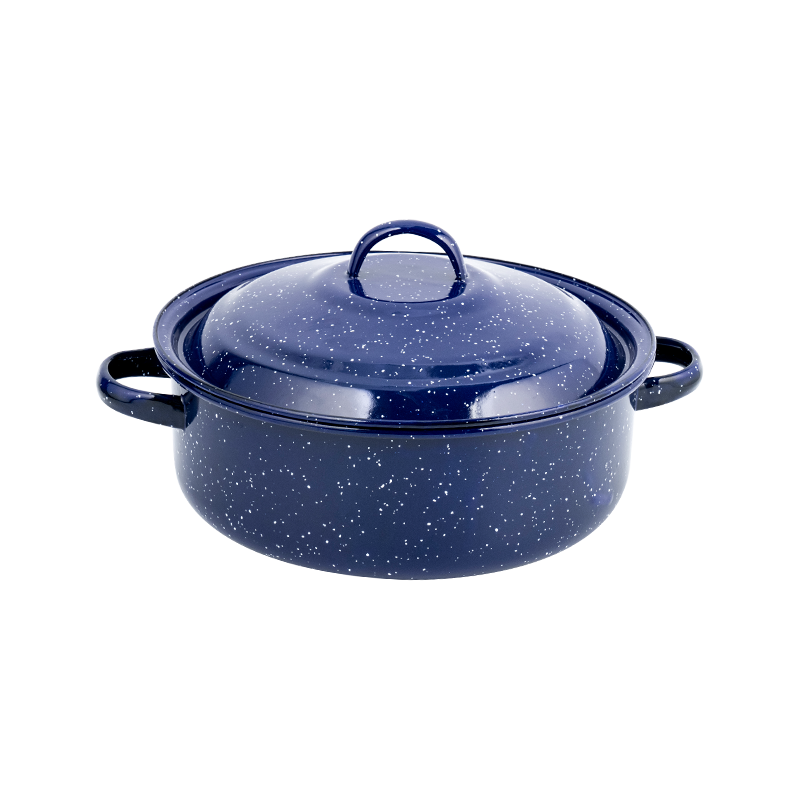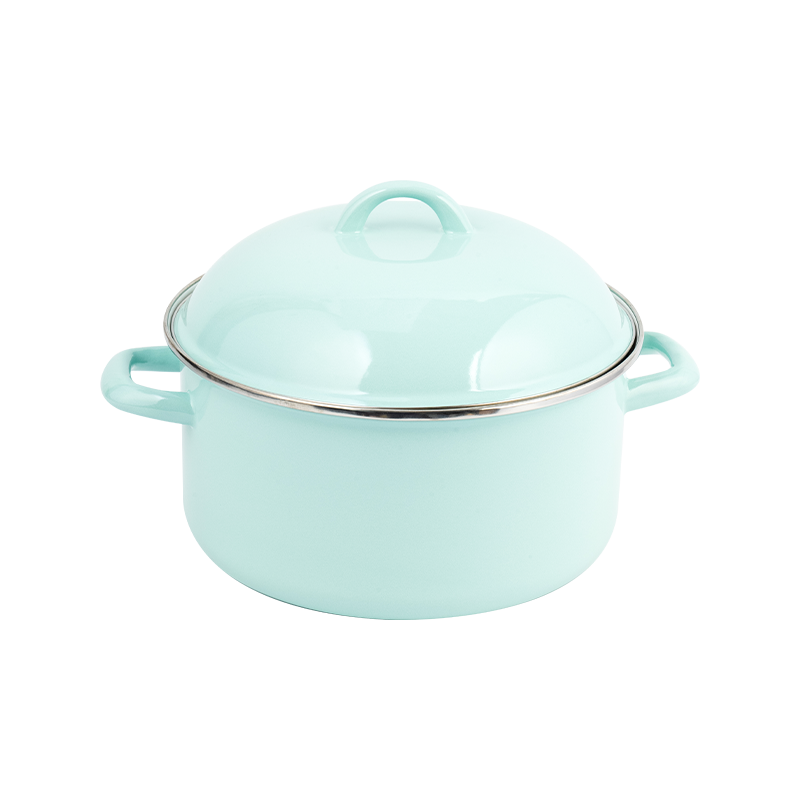A well-crafted double handle enamel pot is a kitchen workhorse, prized for its durability, even heating, and non-reactive surface. However, like any valuable tool, its longevity hinges significantly on proper care. Protecting that beautiful enamel coating isn't just about aesthetics; it prevents rust and ensures your pot serves you faithfully for decades.
Understanding the Enemy: Protecting the Enamel
The enamel coating is essentially a layer of glass fused onto metal (typically cast iron or steel). Its strengths are non-reactivity and ease of cleaning, but its weakness is susceptibility to chipping and thermal shock. The primary enemies are:
- Impact: Dropping the pot or banging it hard against another surface or the faucet.
- Thermal Shock: Placing a very hot pot directly into cold water or adding cold liquid to a scalding-hot empty pot. Rapid temperature changes cause the enamel to expand or contract faster than the underlying metal, leading to cracks or chips.
- Abrasion: Using metal utensils, abrasive scouring pads, or harsh cleansers that scratch the surface.
- Acidic Reactions: While enamel is generally non-reactive, prolonged simmering of highly acidic foods (like tomatoes or vinegar-based sauces) without liquid can potentially etch the surface over time. Leaving acidic residues sitting in the pot is also discouraged.
Essential Care Practices:
-
Gentle Cleaning:
- Cool Before Cleaning: Always let the pot cool significantly before washing. Never plunge a hot pot into cold water.
- Hand Wash Preferred: While some modern enamel coatings are dishwasher-safe, hand washing is generally recommended for longevity. Dishwasher detergents can be harsh, and the jostling increases the risk of chipping.
- Use Soft Tools: Clean with a soft sponge, dishcloth, or a nylon brush. Avoid steel wool, harsh scrub pads, and abrasive powders.
- Stubborn Residues: For baked-on food, soak the pot in warm, soapy water. If needed, create a paste using baking soda and water, gently apply it, and let it sit before wiping clean. A diluted vinegar solution can also help remove mineral deposits. Rinse thoroughly.
- Dry Immediately: After washing, dry the pot completely with a soft towel, especially around the rim and handles where water can pool. Don't air dry, as lingering moisture can promote rust on exposed metal rims (common where enamel meets the handles).
-
Mindful Cooking & Use:
- Avoid Metal Utensils: Use wooden, silicone, or plastic utensils exclusively to prevent scratching the enamel surface.
- Prevent Thermal Shock:
- Always preheat enamel pots gradually over low-to-medium heat. Avoid cranking the burner to high immediately.
- Never pour cold liquid into a completely empty, extremely hot pot. Add a small amount of warm liquid first, or ensure the pot contains food/liquid before heating it intensely.
- Similarly, don't take a hot pot directly from the stove and plunge it into cold water.
- Manage Acidic Foods: It's fine to cook acidic dishes. To minimize potential etching, ensure there's sufficient liquid, avoid prolonged simmering of very concentrated acidic mixtures without liquids, and don't store acidic leftovers in the pot for extended periods. Transfer them to a different container after cooling.
- Moderate Heat: While enamel pots distribute heat well, avoid unnecessarily high heat settings, especially when the pot is empty or nearly empty. This can stress the enamel and underlying metal.
-
Proper Storage:
- Ensure Bone Dry: Confirm the pot is completely dry before storing.
- Protect the Surface: If stacking pots, place a soft cloth or paper towel between them to prevent the enamel surfaces from rubbing against each other or against other cookware.
- Ventilation: Store in a dry, well-ventilated cupboard. Avoid damp locations that encourage rust formation.
Addressing Minor Damage:
- Superficial Staining: Baking soda paste or diluted vinegar solutions are usually effective. Persistent stains don’t usually affect performance.
- Small Chips or Scratches: Unfortunately, enamel cannot be repaired at home. Crucially, if a chip exposes the underlying metal, it can rust. To manage this:
- Dry the pot immediately and thoroughly after every use. Pay close attention to the chipped area.
- Apply a very thin layer of cooking oil to the exposed metal after drying. Be extra vigilant about cleaning and drying this spot.
- Rust Spots on Exposed Metal: Gently scrub the rust spot with a paste of baking soda and water using a soft cloth. Rinse and dry immediately and thoroughly. Apply a thin layer of cooking oil to the spot.

 English
English 中文简体
中文简体




